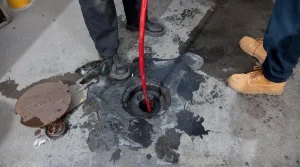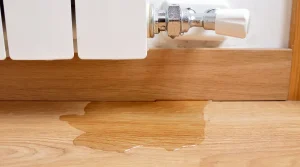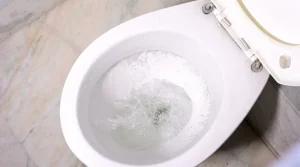If a plunger won’t clear a clog and you’re not ready to give up just yet, a manual drain snake may be your best option. A plumber’s snake or drain auger is a tool that “snakes” down into pipes to clear out clogs. Snaking a pipe is in between plunging and calling in the big guns, like powered drain augers used by professionals.
Plumber snakes are better at clearing drains than plungers, but they are also harder to use. When making sharp turns and twists, they can be hard to move. Learn how your snake works and how to use it right to avoid making mistakes that will cost you money. Here is all the information you need to know about how to use a drain snake.
How to use a plumbing snake. Also, what is an auger?
An auger is just a tool that is made to drill into things. A type of auger is a drill. A plumbing auger or plumbing snake is a long, flexible metal cable with a small, unwound spring on one end and a handle on the other. The snake’s auger head is shaped like a corkscrew. Most home augers are between 20 and 50 feet long. When you’re not using it, the cable coils up into a round case. Most home plumber’s snakes are operated by hand and have a handle or crank that can be turned to move the cable and let it out. By turning the handle, you can move the coil through tight spots.
To snake a drain, you have to go into the drain and physically remove the blockage that is causing the drain to clog. You start by putting the auger head into the drain. Then, you manually feed the snake through the drain until you reach the blockage. As the snake unwinds, it moves through the drainpipe until the blockage is broken through by the head. Here is a more in-depth look at how to use a drain auger:
How to use:
- Put on clothes you don’t mind getting dirty and put some old towels under the pipes you’re working on. Depending on how bad the clog is, the way you snake it out could get messy. This is important, especially if you end up taking out the p-trap.
- (Optional but recommended) (Optional but recommended) Think about taking out the p-trap. The piece of pipe that curves under the sink is the p-trap. It links the sink to the rest of your home’s drain system. The sink is curved so that sewer gas doesn’t come up through it and into the house. Most of the time, P-traps are made of PVC pipe, but they can also be made of metal.
You can remove the p-trap by hand, either by using your hands or an adjustable wrench. When you take out the p-trap, you should look at it carefully and clean it well. If you’ve found the blockage, you might not even have to snake. Most of the time, removing the trap makes it easier to snake because it lets you skip this hard turn.
- (Optional) You could think about taking the trap arm off. The part of the pipe between the p-trap and the wall pipe is called the trap arm. It keeps the p-trap in place and may curve again to reach the wall. Look for a metal or plastic nut that holds the trap arm to the wall. Loosen it if you can find one to get the trap arm off. If you can’t, the arm might be stuck in place. If that’s the case, don’t try to take it off. When you take out the trap, make sure to clean out the trap arm just like you did with the p-trap.
When you take off the trap arm, you can get the best look at the drainpipe. Look inside the drain to see if there are any clogs. If you can see the obstacle from where you are, try to get rid of it. If you can’t, it’s time to bring out your snake.
- Put the snake’s auger head into the pipe by hand. If you didn’t take out the trap, put the snake’s head in the drain. If you did, use the hole in the wall. If you didn’t take the trap out, you might want to run cold water while you snake.
Don’t put a lot of force into pushing the auger into the drain, or you could damage the drain opening or pipe. Be patient and make sure the head and cable aren’t too big for the drain you’re trying to snake.
- Use the snake to start uncoiling the snake. Keep the snake’s handle as close as possible to where the pipe opens. The more force you put into the pipe, the less slack there is in the auger.
Slowly and steadily feed the line. If the cable moves through the pipe and you feel resistance at any point, you may have hit a blockage or just a bend in the pipe.
- When you get to the problem, turn the handle to move the head back and forth while you keep pushing. Try breaking up the blockage or going around the corner, but don’t force the auger into the pipe walls. If you hear scraping sounds, stop snaking and make a new adjustment. Pushing and pulling in a steady way while turning the crank can help.
- Take the snake out and put the sink back together. Check the auger head to see if any of the blockages is still there, and then clean it. If you took out the trap arm and p-trap, now is the time to put them back in.
- Try out the sink. The snake should have been able to get rid of the blockage and solve the problem. If the clog is still there, you could repeat the snaking process. But using a drain snake too much can damage your pipes or drains, just like plunging. If snaking the problem well didn’t solve it, it might be time to call in the experts.
North Bergen Drain Cleaning Pros
Surprisingly, snaking is a very easy and accessible home project. As long as you know how to use your snake and have the patience to move it around, you should be able to get rid of those annoying clogs in your sink, tub, or toilet.
When you just can’t get that clog to move, no matter what you do. Don’t despair! After you get rid of your snake, you should call BJC Plumbers North Bergen. We have the right tools and knowledge to find and clear any traffic jam outside of North Bergen.







